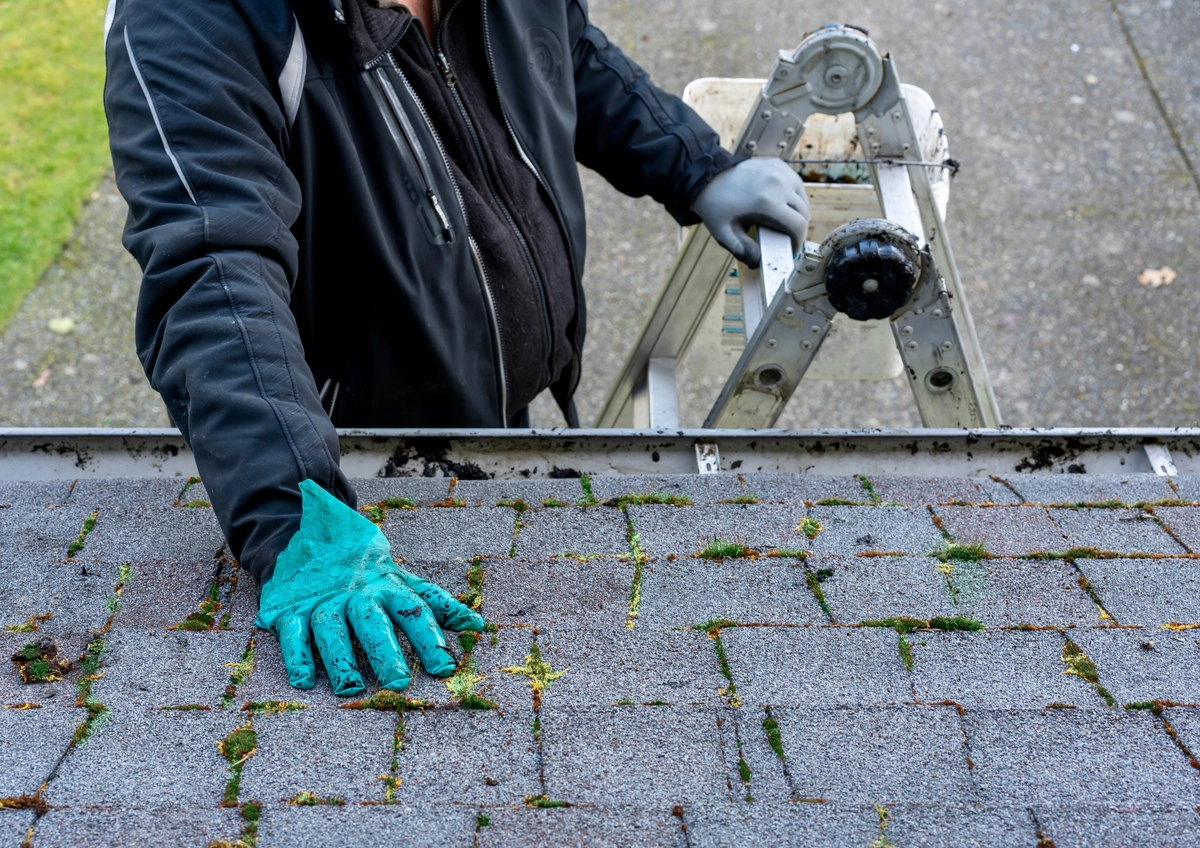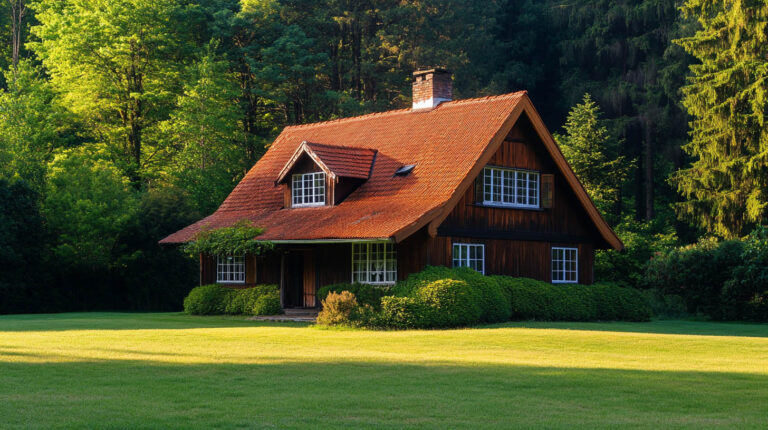
Blog
How Long Will My Roof Last? Maintenance Tips & More
Your roof is one of the most crucial components of your home, protecting it from the elements and providing shelter for your family. However, like all parts of your house, your roof has a limited lifespan. How long your roof will last depends on several factors, including the materials used, maintenance, and environmental conditions.
In today’s expert guide, we will explore:
- How long a roof lasts by material
- Signs of roof damage
- Factors that can age your roof
- Ways to increase its longevity
- The cost of roof replacement
- How to find a quality contractor
How long does a roof last? Keep reading to find out when it is time for a roof replacement.
How Long Does a Roof Last by Material?

Roofing materials play a significant role in determining the lifespan of your roof. Different materials have different durability and longevity characteristics. Here’s an overview of common roofing materials and their expected lifespans:
Asphalt Shingles:
Asphalt shingles are the most popular roofing material due to their affordability and ease of installation. Typically, asphalt shingles can last 15 to 30 years, depending on their quality, climate, and maintenance.
High-quality architectural shingles may last longer, sometimes up to 40 years or more.
Metal Roofing:
Metal roofs, such as steel, aluminum, or copper, offer excellent longevity and durability. A well-maintained metal roof can last 40 to 70 years or even longer, making it a long-term investment.
Wood Shingles and Shakes:
Wood shingles and shakes give a charming, rustic appearance to your home. They typically last 20 to 30 years, but proper maintenance can extend their lifespan.
Clay or Concrete Tiles:
Clay and concrete tiles are known for their longevity and resistance to harsh weather conditions. These materials can last 50 to 100 years or more when well-maintained.
Slate Roofing:
Slate is one of the most durable roofing materials available. A properly installed and maintained slate roof can last 100 to 150 years or even longer.
Rubber Roofing (EPDM):
EPDM (Ethylene Propylene Diene Monomer) rubber roofs are known for their resistance to UV rays and weathering. With proper care, they can last 25 to 30 years.
TPO and PVC Roofing:
Thermoplastic Olefin (TPO) and Polyvinyl Chloride (PVC) roofing are common in commercial buildings. Their lifespan typically ranges from 20 to 30 years with proper maintenance.
Signs of Roof Damage
Regardless of the roofing material, your roof can develop issues over time. Regular inspections can help you catch problems early and extend the life of your roof. Here are some common signs of roof damage to look out for:
- Missing, Curling, or Damaged Shingles: Missing or damaged shingles can expose the underlying structure to the elements, leading to leaks.
- Leaks and Water Stains: Water stains on your ceiling or walls are clear indicators of a roofing problem. Even small leaks can cause significant damage over time if not addressed promptly.
- Moss and Algae Growth: The growth of moss, algae, or lichen on your roof can damage shingles and trap moisture, accelerating decay.
- Sagging or Uneven Roof: A sagging or uneven roof may indicate structural issues that need immediate attention.
- Granule Loss: Asphalt shingles losing granules can result in reduced protection from UV rays and water damage.
- Damaged Flashing: Damaged flashing around chimneys, vents, or skylights can lead to leaks and water infiltration.
- Cracked or Loose Tiles: In the case of clay or concrete tiles, cracks or loose tiles can compromise the roof’s integrity.
- Rotting Wood: Rotting or decaying wood in the roof’s structure is a severe problem that requires immediate repair.
What Can Age Your Roof?
Several factors can contribute to the aging of your roof. Understanding these factors can help you take proactive measures to increase your roof’s longevity:
- Weather: Extreme weather conditions such as heavy rain, hail, snow, and high winds can accelerate roof deterioration.
- UV Radiation: Prolonged exposure to UV rays can cause shingles to deteriorate and lose their protective granules.
- Poor Ventilation: Inadequate attic ventilation can trap heat and moisture, leading to premature roof aging.
- Lack of Maintenance: Neglecting routine maintenance, such as cleaning gutters and removing debris, can lead to roof problems.
- Tree Debris: Overhanging trees can drop leaves, branches, and debris onto your roof, which can damage shingles and trap moisture.
- Poor Installation: Incorrect installation techniques or shortcuts taken during installation can reduce a roof’s lifespan.
- Moss and Algae Growth: These organisms can hold moisture against shingles, causing them to deteriorate faster.
- Foot Traffic: Frequent foot traffic on the roof can damage shingles and compromise its structural integrity.
How to Increase the Longevity of Your Roof: 9 Tips
While the lifespan of your roof depends on various factors, you can take proactive steps to extend its durability and postpone the need for replacement:
1) Regular Inspections:
Conduct annual roof inspections to identify and address issues early.
2) Clean Gutters and Downspouts:
Keep gutters and downspouts free of debris to ensure proper drainage and prevent water damage.
3) Trim Overhanging Trees:
Trim branches that hang over your roof to prevent debris accumulation and potential damage during storms.
4) Proper Ventilation:
Ensure your attic has proper ventilation to regulate temperature and humidity, reducing moisture buildup.
5) Address Moss and Algae:
Clean and treat your roof to remove moss, algae, or lichen growth, and install zinc or copper strips to prevent regrowth.
6) Professional Maintenance:
Hire a professional roofing contractor for periodic maintenance and repairs.
7) Prompt Repairs:
Address any signs of damage or leaks promptly to prevent further deterioration.
8) Choose High-Quality Materials:
Invest in high-quality roofing materials and professional installation for a longer-lasting roof.
9) Insulation:
Adequate attic insulation can help maintain consistent temperatures and reduce energy costs.
The Cost to Replace a Roof

Roof replacement is a significant investment, and the cost can vary widely based on various factors:
Roof Size and Complexity:
Larger roofs or those with complex designs may require more materials and labor, resulting in higher costs.
Roofing Material:
The type of roofing material you choose will greatly affect the cost. Asphalt shingles are generally more affordable than premium materials like slate or metal.
Removal of Old Roof:
Removing the existing roof layers and disposing of them adds to the overall cost.
Labor Costs:
Labor costs depend on the region and the roofing contractor you hire. Get multiple quotes to find the best value.
Additional Features:
Roof features such as skylights, chimneys, and ventilation systems can increase the overall cost.
Permits and Inspections:
Be prepared for permit fees and required inspections, which vary by location.
To get an accurate estimate for your specific roof replacement project, it’s essential to consult with reputable roofing contractors and obtain multiple quotes. Remember that investing in a high-quality roof and professional installation can save you money in the long run by extending its lifespan.
How to Find a Quality Contractor
Choosing the right roofing contractor is crucial to ensure your roof replacement or repairs are done correctly and to your satisfaction. Here are some steps to help you find a reputable roofing contractor:
- Research and Recommendations: Ask friends, family, and neighbors for recommendations. Online reviews and ratings can also provide valuable insights.
- Check Credentials: Verify that the contractor is licensed, insured, and bonded. This protects you from liability in case of accidents or damage during the project.
- Experience and Expertise: Look for contractors with extensive experience in your specific roofing material and type.
- Obtain Multiple Quotes: Seek quotes from multiple contractors to compare pricing, services, and warranties.
- Written Contracts: Always insist on a written contract that outlines the scope of work, timeline, payment terms, and warranties.
- References: Ask for references from previous customers and follow up with them to gauge their satisfaction with the contractor’s work.
- Warranty: Ensure the contractor offers warranties for both materials and workmanship.
- Clear Communication: Choose a contractor who communicates effectively and addresses your questions and concerns promptly.
- Avoid High-Pressure Sales: Be cautious of contractors who use high-pressure sales tactics or require upfront payments before work begins.
Learn More About Your Roof’s Life Expectancy
The lifespan of your roof depends on various factors, including the roofing material, maintenance, and environmental conditions. Regular inspections and proactive maintenance can extend your roof’s longevity. When the time comes for roof replacement, consider the cost, materials, and the reputation of the contractor you choose.By following these guidelines and investing wisely in your roof, you can ensure that your home remains protected for years to come. Remember that a well-maintained and durable roof is not only an essential investment but also a valuable asset to your home.
Contact Avenue Roofing today to learn about roof maintenance and your roof replacement options!



